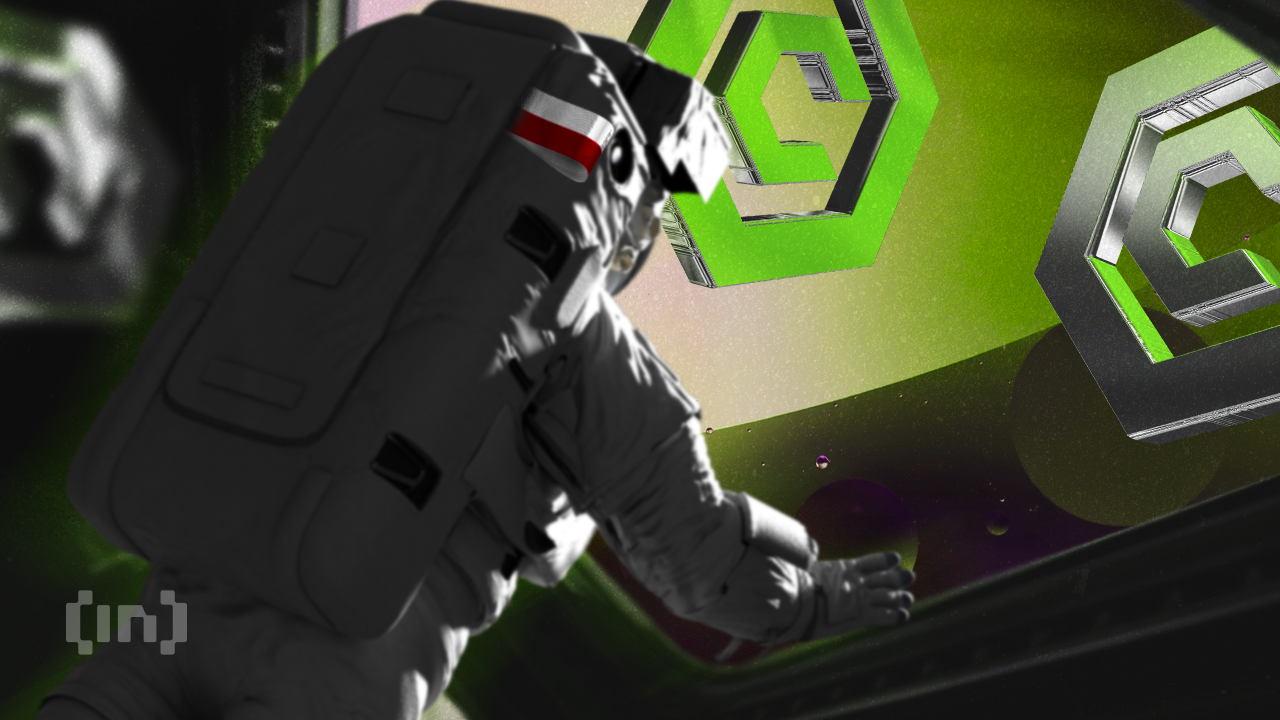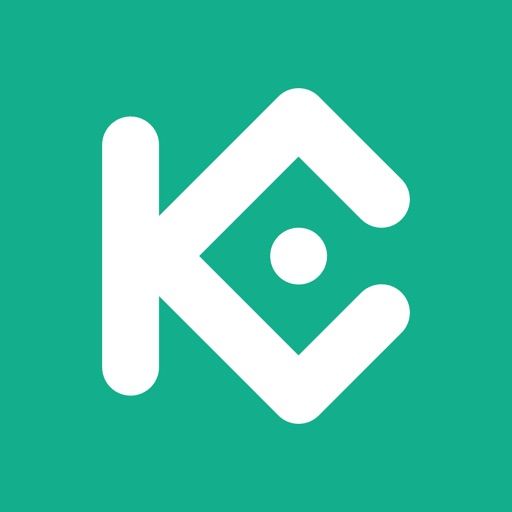Cronos is an ambitious project looking to establish itself as the infrastructure layer of an open metaverse. CRO is the native cryptocurrency in the Cronos ecosystem. In this Cronos explainer, we look at the project in-depth, considering what makes it unique and the long-term potential of CRO as an investment choice.
Methodology
BeInCrypto assessed several leading crypto exchanges in order to recommend the optimal platforms where you can buy CRO. We focused on certain key parameters such as security, trading fees, UI and UX. Based on our experience, here are the four shortlisted exchanges you can consider for buying CRO.
Coinbase:
OKX:
• Extensive range of trading pairs, including CRO/USDT and CRO/BTC.
• Low trading fees, especially for market makers, which can benefit active CRO traders.
• Advanced trading tools and features suitable for experienced CRO traders.
• Strong liquidity and market depth for popular trading pairs like CRO.
• Offers margin trading and futures trading for CRO, catering to more advanced trading strategies.
• Provides a mobile app and supports multiple languages, making it accessible to a global user base.
KuCoin:
Gate.io:
To learn more about BeInCrypto’s verification methodology, follow this link.
- Best platforms to buy CRO
- Coinbase
- OKX
- KuCoin
- Gate.io
- What is Cronos?
- The team behind Cronos
- Cronos: A brief history
- Under the hood of the Cronos blockchain
- Cronos explainer: CRO token in a nutshell
- What makes Cronos (CRO) unique?
- Cronos explainer: Is CRO still a worthwhile investment?
- Frequently asked questions
Best platforms to buy CRO
Before we kick off this Cronos explainer, we’ve put together a quick list of recommended platforms for those looking to buy Cronos. Here are four of the best exchanges you can consider if you plan on adding CRO to your portfolio.
Coinbase
Coinbase stands out as a user-friendly platform for beginners interested in purchasing CRO. It offers a wide range of cryptocurrencies, including CRO, with strong regulatory compliance and security measures in place. Additionally, Coinbase provides insured digital asset custody, FDIC-insured USD balances, educational resources, and supports various payment methods, making it an attractive choice for those new to the cryptocurrency space.
- User-friendly interface, making it accessible for beginners
- Strong regulatory compliance and security measures
- Wide range of cryptocurrencies available for trading
- Insured digital asset custody and FDIC-insured USD balances
- Extensive educational resources for users
- Higher fees compared to some competitors
- Limited trading options and tools for advanced traders
OKX
OKX caters to experienced CRO traders with its extensive range of trading pairs, including CRO/USDT and CRO/BTC, low trading fees, and advanced trading tools. The exchange boasts strong liquidity and market depth for popular pairs like CRO, while also offering margin trading and futures trading options for more advanced strategies. With a mobile app and multi-language support, OKX appeals to a global user base.
- Extensive range of trading pairs and crypto derivatives
- Low trading fees, especially for market makers
- Advanced trading tools and features for experienced traders
- Strong liquidity and market depth
- Multi-language support and global reach
- User interface can be overwhelming for some beginners
- Regulatory compliance and security measures not as robust as some competitors
KuCoin
KuCoin offers a wide selection of altcoins and trading pairs, including CRO, along with low trading fees and incentives for holding KCS tokens. Its user-friendly mobile app and trading interface facilitate on-the-go CRO trading, while its robust security features, including cryptocurrency lending services for CRO, provide added reassurance. KuCoin’s range of trading tools and features, such as stop-loss orders and margin trading for CRO, are ideal for both beginners and advanced traders.
- Wide selection of altcoins and trading pairs
- Low trading fees and attractive incentives for holding KCS tokens
- User-friendly mobile app and trading interface
- Robust security features, including cryptocurrency lending services
- Active community and social trading features
- Limited fiat currency options for deposits and withdrawals
- Customer support can be inconsistent, especially during high-volume periods
Gate.io
Gate.io presents a diverse range of cryptocurrencies and trading pairs, including CRO, with low trading fees and attractive referral programs. The exchange offers futures trading and lending services, providing additional opportunities for CRO traders. Its user-friendly interface and mobile app make it easier to buy and trade CRO, while supporting various payment methods and offering multi-language support for a global user base.
- Diverse range of cryptocurrencies and trading pairs
- Low trading fees and attractive referral programs
- Offers futures trading and lending services
- User-friendly interface and mobile app
- Strong liquidity for popular trading pairs
- Limited fiat currency support and geographic restrictions
- Security measures and regulatory compliance not as robust as top-tier exchanges
What is Cronos?
Cronos undertakes a forward-thinking approach to layer-1 blockchain technology. As an open-source, decentralized public blockchain with a delegated proof-of-authority (PoA) consensus mechanism, Cronos distinguishes itself through its energy-efficient architecture. It also sports the ability to deliver faster transaction speeds at reasonable fees.
As part of its broader objective, Cronos focuses on empowering the fast-growing creator economy. It does so by working towards facilitating a strong foundation for web3 applications, decentralized finance (DeFi), and GameFi. But that’s not all, as the project has another ambitious goal — to serve as the bedrock infrastructure for an open and boundless metaverse.
At its core, Cronos is an Ethereum-Virtual Machine (EVM) compatible blockchain that draws power from Ethermint and the Cosmos SDK. It supports Inter-Blockchain Communication (IBC), which means Cronos can import cryptocurrencies from different blockchains. This capability ensures that end-users can effortlessly import and integrate digital assets from the Ethereum, Cosmos, and other blockchain families directly into the Cronos ecosystem. Subsequently, this allows users to leverage, trade, and invest in these assets within Cronos’ smart contract protocols.
Cronos in a nutshell:
- EVM compatibility for easy app/contract porting from the Ethereum ecosystem.
- Scalability for faster, cheaper, and eco-friendly transactions.
- IBC capability for cross-chain interoperability and bridging.
- Proof-of-authority (PoA) consensus mechanism for streamlined scalability and security.
- Open-source model, which makes community involvement and contributions easier.
“Cronos is designed to support the creator economy with web3 applications such as DeFi and GameFi, ultimately serving as the foundational infrastructure for an open metaverse. Cronos is designed to serve the next billion web3 users and to help them experience the full promise of self-custody of their digital assets.”
– Cronos whitepaper
The team behind Cronos
Singapore-based crypto exchange Crypto.com developed the Cronos blockchain. Formerly known as Monaco Technologies GmbH, Crypto.com is the brainchild of Bobby Bao, Gary Or, Kris Marszalek, and Rafael Melo. All of the co-founders, except Gary Or, were with the online marketplace Ensogo before it went out of business in 2016.
Foris DAX MT Limited, a Malta-based company, owns Crypto.com. However, CRO Protocol Labs, an entity based in the Cayman Islands, is responsible for developing both the Cronos Chain and the Crypto.org Chain.
Cronos: A brief history

The history of Cronos goes back to the early days of Monaco Technology GmbH, which launched the Monaco Coin (MCO) shortly after its launch in 2016. That was the start of the exchange that would later be rebranded as Crypto.com.
During the rebranding, Crypto.com also launched its own blockchain. Crypto.org, a sister organization of crypto.com, was responsible for overseeing this new blockchain. Alongside, the company also rebranded MCO to CRO to ensure better brand recognition.
The original plan involved MCO holders getting a head start with CRO once the network launched. However, the goal for the Cronos Chain was to offer compatibility with the Ethereum Virtual Machine (EVM) while simultaneously incorporating support for Inter-Blockchain Communications (IBC) networks. This approach ensured that Cronos was interoperable with both the Ethereum and Cosmos ecosystems. Consequently, rolling out the new blockchain was like starting from scratch, a massive endeavor that required over three years of elbow grease.
Finally, on Nov. 8, 2021, the curtain rose on the Cronos network, marking its debut by validating its very first block.
Sponsored SponsoredUnder the hood of the Cronos blockchain
Cronos harnesses the power of Ethermint, Tendermint, and the Cosmos SDK to create its platform. Ethermint enables compatibility with the Ethereum Virtual Machine (EVM), making it possible for Cronos to host Ethereum DApps while delivering quicker transactions and reduced costs.
Meanwhile, the collaboration between Tendermint and the Cosmos SDK paves the way for a solid consensus mechanism. This, in turn, facilitates IBC compatibility, thereby allowing for smooth interactions and asset exchanges across various blockchains.
Not only does this approach strengthen Cronos’s capabilities, but it also fortifies the network’s security and scalability. As a result, developers find fertile ground for creating cutting-edge applications. On the opposite spectrum, users also get to enjoy a blockchain ecosystem that’s both more efficient and accessible.
Ethermint and EVM compatibility
At the heart of the Cronos ecosystem lies Ethermint, which is critical for several reasons:
- It enables the hosting of Ethereum smart contracts and DApps on the Cronos platform.
- It achieves faster transaction speeds and lower fees than the Ethereum network.
- The reliance on Ethermint allows for EVM compatibility. It simplifies the transition for developers from Ethereum to Cronos without requiring significant modifications.
- Furthermore, the integration with Ethermint brings support for the EIP-1559 transaction model, thereby optimizing fees based on network demand and offering a cost-effective solution for developers and users. This positions Cronos as an appealing option for those looking to develop or use Dapps within a scalable and interoperable blockchain ecosystem.
Tendermint, Cosmos SDK, and IBC
Cronos combines the best of Tendermint and the Cosmos SDK to make room for a solid, scalable foundation for its network. Here, Tendermint functions as a consensus engine and facilitates the rapid development and maintenance of blockchain networks.
The Cosmos SDK, meanwhile, serves as a bespoke framework for blockchain application development. Its responsibility involves offering developers the right set of modular tools and libraries, which they can use to create customized blockchain solutions.
Furthermore, these technologies give Cronos the ability to support Inter-Blockchain Communication. This ability then ensures that different autonomous blockchains can securely facilitate smooth transactions. This way, Cronos can fluidly connect and share assets with other blockchains within the Cosmos network.
Governance
As an open-source blockchain, Cronos gives all CRO token holders a say in its governance. Each holder can use this democratic power to propose, finance, and cast their votes on various initiatives. This way, all stakeholders are squarely responsible for the evolution of the network and the surrounding ecosystem.
Each new initiative proposed by a community member has to undergo the following eight steps:
- Idea conception: The spark of a new idea is born.
- Drafting the proposal: Putting the idea into a structured format.
- Community feedback: Gathering insights and opinions from the wider network.
- Proposal revision: Refining the proposal based on the feedback received.
- Mainnet submission: Presenting the finalized proposal to the mainnet.
- Activation deposit: Lodging 20,000 CRO to kickstart the voting mechanism.
- Voting: Casting votes on active proposals within the mainnet.
- Outcome: Finalizing the proposal as either adopted or rejected, based on the community’s votes.
Cronos explainer: CRO token in a nutshell
CRO, the native asset of the Cronos ecosystem, derives its relevance and value from the broader Cronos and Crypto.com ecosystems. It originally debuted as an ERC-20 token on the Ethereum blockchain but was later incorporated as the native token after Crypto.com rolled out its homegrown blockchain. Subsequently, it was made available on Crypto.org (CRO) and Cronos (CRC-20 CRO) networks as well.
With a market capitalization of just under $4 billion and a circulating supply (24h) of 35+ million, CRO currently ranks #36 in the list of top cryptocurrencies (by market cap) as of March 21, 2024.
Token distribution and utility
A sizable pool of 30 billion CRO tokens exists in totality. The allocation of these tokens is strategized as follows:
- 30% is earmarked for secondary distribution and launch incentives, gradually unfurling over a span of five years.
- 20% nestles within the capital reserve account.
- 20% is devoted to fostering long-term incentives for the network.
- 20% supports ecosystem grants.
- 10% fuels community outreach and marketing initiatives.
So, how and where can you spend your CRO tokens? CRO stands at the crossroads of two very important use cases.
- On-chain dynamics: CRO serves as the fuel for gas fees and facilitates smooth transactions across the Cronos Chain.
- Value circulation: As a CRO holder, you can stake CRO with a validator node or plunge it into an on-chain liquidity pool. If things go well, you could earn serious returns in the form of additional CRO.
Apart from these, you could also use your CRO stash as a payment medium.

Where to store your CRO tokens
You can store your CRO assets in a wallet on the exchange where you purchased them or move them to an external wallet. Since you don’t have the keys to your wallet when your crypto is sitting on exchanges, it’s recommended that you transfer your CRO token to a more secure option. As the saying goes, “Not your keys, not your coins!”
Non-custodial crypto wallets like MetaMask, Gnosis, Freewallet, Exodus, and Atomic Wallet support CRO storage. Similarly, hardware wallets like Ledger Nano X and Trezor Model T are considered the most secure option for storing CRO assets. They are not connected to the internet, making them resistant to malicious attacks. Hardware wallets are the best option if you plan to hold a significant amount of CRO long-term.
Sponsored SponsoredWhat makes Cronos (CRO) unique?

One of Cronos’s primary objectives is to bridge the gap between Ethereum and Cosmos ecosystems. The project has made big strides towards achieving that goal, carving out a niche in the blockchain space with its persistent focus on interoperability.
That said, it is important to consider the promises and potential drawbacks while analyzing the factors that make it unique.
EVM compatibility is a big plus
On the positive side, Cronos boasts seamless EVM compatibility. Developers can potentially port existing Ethereum smart contracts and DApps, which translates into being efficient with time and resources. This could further accelerate innovation
However, the success of this approach hinges on how smoothly these ported applications integrate with the Cronos network. Additionally, developer adoption is crucial, and it remains to be seen if Cronos can attract a critical mass of talent.
IBC support makes the whole deal sweeter
Another positive trait of Cronos is that it promises interoperability through IBC support. This allows the platform to connect with other Cosmos-based blockchains. Note that the actual functionality and adoption of IBC across different chains is still in progress.
Faster transactions, low fees
Beyond its bridging ambitions, Cronos touts fast transaction speeds and low fees thanks to its proof-of-authority (POA) consensus mechanism. This could be a significant advantage compared to congested networks like Ethereum. On the flip side, however, POA raises some concerns about centralization, as a smaller set of validators secures the network.
Open-source model
Finally, Cronos operates as an open-source project, which has manifested in an expanding collaborative community. This transparency is a positive, but its long-term impact on development and network stability depends on the strength and activity of its core developer base.
All things considered, Cronos indeed shows unique potential by way of its compelling vision of bridging blockchains, faster transactions, and a developer-friendly environment. However, the success of these promises hinges on factors like developer adoption, the effectiveness of IBC integration, and the long-term security of the POA consensus mechanism.
Cronos explainer: Is CRO still a worthwhile investment?
As this Cronos explainer has highlighted, Cronos is indeed a promising project. With its focus on scalability, low transaction fees, and user-friendly ecosystem, Cronos has the potential to become a significant player in the crypto/blockchain space.
Based on all these factors, if the Cronos team can stick to their roadmap and deliver on their promised future developments, CRO could be an asset worth considering for your portfolio. That said, like any other cryptocurrency, CRO is also susceptible to the high volatility of the crypto market. That is why you should also exercise extreme caution and invest only the amount you can afford to lose. As always, do your research (DYOR) before investing, and consult a qualified financial advisor if necessary.





